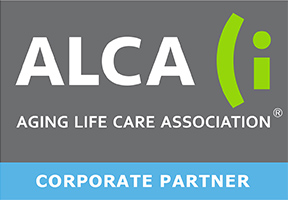At a Glance:
- Independent Living: For active seniors who don’t require daily care or assistance.
- Personal Care: Provides support with personal care and health-related needs.
- Lifestyle: Both offer private residences, social activities, and maintenance-free living.
With so many senior living options available today, it’s easy for families to feel overwhelmed when trying to choose the right fit. Independent living and personal care are two of the most common options—and while they share some similarities, they serve different needs.
Independent Living is designed for older adults who are largely self-sufficient but want to enjoy a maintenance-free lifestyle with amenities, social opportunities, and peace of mind. Personal care offers the same comforts, along with added support for daily tasks like dressing, bathing, or managing medications.
Both options foster independence, but the level of care and involvement makes all the difference between independent and personal care. Here’s how they compare. 1, 2
Medical & Daily Living Support
Independent Living is best suited for older adults who are active and able to manage their own medical needs. These communities do not provide daily caregiver support or nursing oversight, though some residents may arrange outside services if needed. The focus is on safety, convenience, and freedom from home maintenance.
Personal care provides support with daily tasks such as bathing, grooming, and medication management. A nurse helps coordinate care and is typically on-site or on call to respond to health concerns. Support is customized based on the resident’s needs—making it a smart choice for those with chronic conditions or progressing health issues. 2,3
Community Layout & Accessibility
The design of a senior living community can shape daily routines and overall ease of access.
Independent Living communities are often spread out across large campuses with multiple buildings, walking paths, and standalone residences or apartments. While this setup offers more space and privacy, it can mean longer walks—or even drives—to reach dining areas, fitness centers, or events.
Personal care communities are typically more compact and self-contained. Residences, dining, and amenities are located within the same building or connected structure, making it easier for residents with mobility challenges to get around. Features like elevators, accessible bathrooms, and centralized layouts are standard—and some communities even include memory-friendly design elements. 2,3
Family Involvement
Independent and personal care communities both encourage families to stay connected and involved.
In Independent Living, residents maintain autonomy and make their own choices. Families are welcome to visit, share meals, and attend community events, but they may still provide occasional support for health-related needs or appointments.
In Personal care, family members often take a more hands-on role in care planning. Staff regularly communicate with loved ones to share updates and ensure care plans are aligned. This support can ease the burden on families—allowing them to focus more on relationships than responsibilities. 2,3
Programming & Social Life
Both Independent and personal care communities offer a variety of amenities and activities for senior engagement and connection.
In Independent Living, residents can enjoy fitness classes, art studios, movie nights, book clubs, and more. Dining is often flexible, with one or two meals included and the option to cook in their own kitchens. Communities also provide housekeeping, transportation, and other convenience-focused services to support a retirement community lifestyle.
In Personal care, all meals are included and prepared with residents’ dietary needs in mind. Programming is often more frequent and tailored to individual abilities, with small-group activities designed to support cognitive and physical health. These offerings help residents stay active, social, and fulfilled—regardless of their level of independence. 2,3
Comparing Senior Living Costs & Payment Options
Understanding the financial differences between Independent and personal care can help families plan more effectively.
Independent Living is generally more affordable because it doesn’t include personal care or medical services. Many communities charge an entrance fee along with a monthly rate that covers rent, amenities, housekeeping, and included dining. Costs are usually paid out-of-pocket using retirement income, home sale proceeds, or other personal funds.
Personal care follows a rental-based model with monthly fees that include housing, meals, programming, and personal care support. Most communities offer different levels of care based on how much assistance a resident needs—so costs can vary depending on the services provided. Some expenses may be covered by long-term care insurance, VA benefits, or Medicaid, depending on eligibility and provider participation. 2,3
Making the Right Choice
Independent and personal care communities share many of the same comforts—private residences, dining options, enriching activities, and supportive services. The biggest difference comes down to the level of care provided. Independent Living is designed for active older adults who don’t need help with daily tasks, while personal care includes personalized support with activities like bathing, dressing, and medication management.
When exploring options, consider both lifestyle preferences and care needs. If your loved one values independence but could use daily support, a personal care home may be the best fit. If they’re active, social, and simply looking to shed the burdens of homeownership, Independent Living might be ideal. Touring communities is one of the best ways to get a feel for the environment and offerings—schedule a visit to see what feels like home. 1
References
[1] Hallstrom, Leah. “Personal care vs. Independent Living.” Personal care vs. Independent Living, www.aplaceformom.com/caregiver-resources/articles/assisted-living-vs-independent-living. Accessed 29 July 2025.
[2] “Independent vs. Personal care – 5 Key Differences.” The Arbor Company, The Arbor Company, 8 July 2025, www.arborcompany.com/blog/independent-vs-assisted-living-5-key-differences.
[3] Fleming Caruso, MA, LMHC, Tara. “Five Differences between Independent Living and Personal care.” Personal care vs. Independent Living: 5 Differences | Hebrew SeniorLife, 30 Dec. 2024, www.hebrewseniorlife.org/blog/five-differences-between-independent-living-and-assisted-living.
The information provided in the article is for general informational purposes only. This information is not a substitute for medical advice. Accordingly, before taking any actions based upon such information, you are encouraged to consult with the appropriate professionals.






